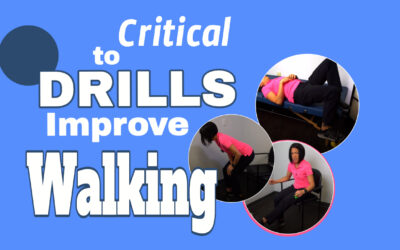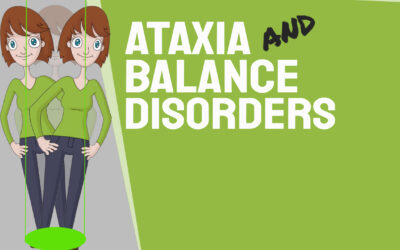How do you regain the ability to walk without fear of falling?
Fear of falling is a MAJOR concern for a lot of people. In the early stages of rehabilitation, the goal is to regain movement control at the hip, knee, and ankle. This is necessary to ensure that someone can support their body weight. Once you have established good movement control, you are ready to start adding additional challenges to standing and walking. It is not just enough to be able to support your body weight, It is also necessary to be able to move the “free leg” (leg in the air) in different directions. This is important for things like turning, stepping over obstacles, and walking in small spaces (where you might need to walk with your feet very close together).
All that being said, here is part two in a blog series on what I am calling “advanced walking exercises”. These exercises are critical in order to regain the ability to walk without fear of falling.
1. Kneeling Clam Shell
A kneeling clam shell is great to help isolate the hip muscles. More specifically the hip rotators. Again, a necessary skill in order to perform turn steps. For this exercise you are going to start in kneeling (on the involved leg) and rotate the opposite knee out to the side.
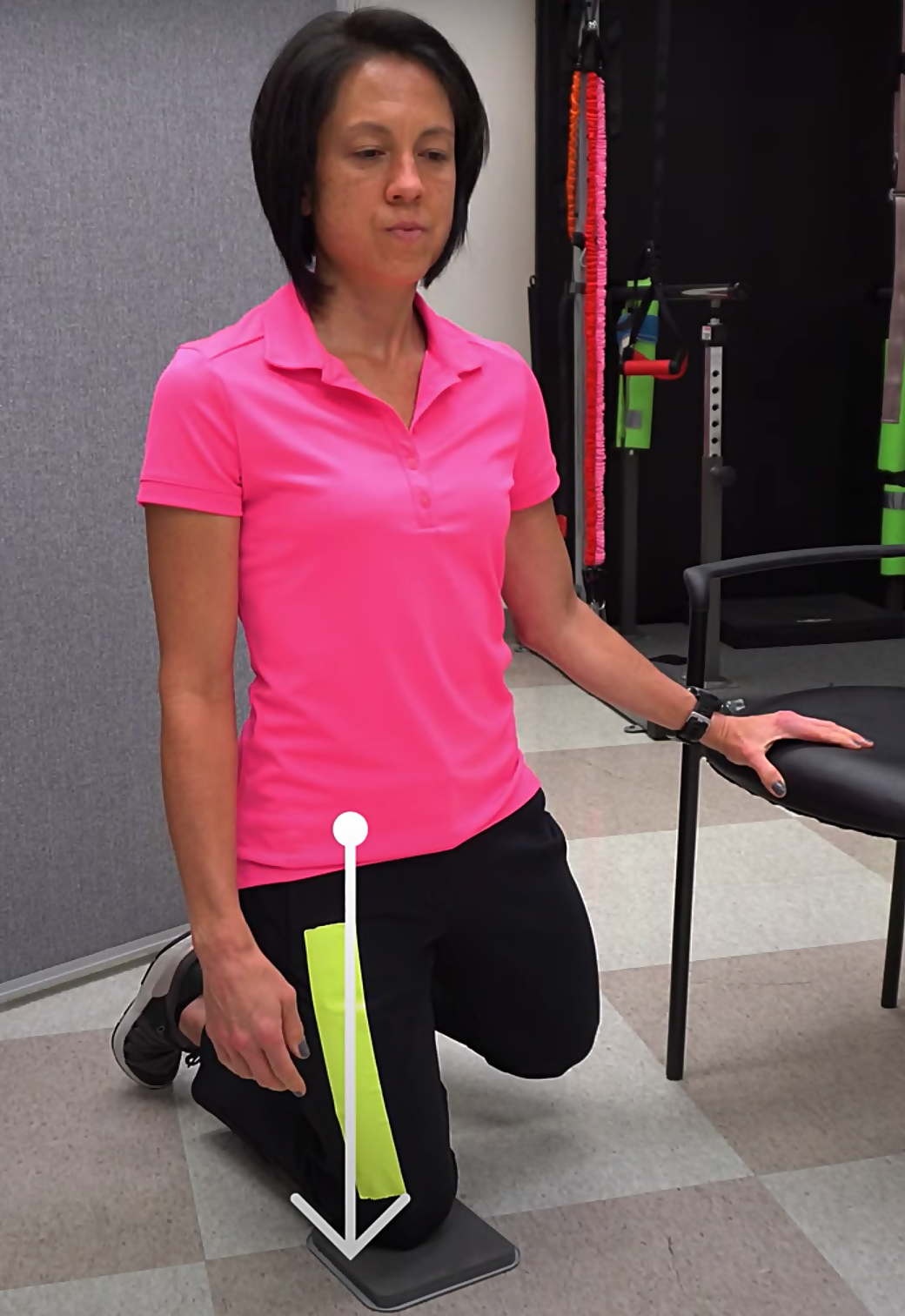
2. Kneeling to Half Kneeling
Kneeling to half kneeling repetitions will take the previous exercise just one step further. By bringing the leg all the way through, you are further challenging that involved hip. Make sure for this exercise that you “squeeze you bottom” in the involved leg and keep your chest pointing toward the ceiling.
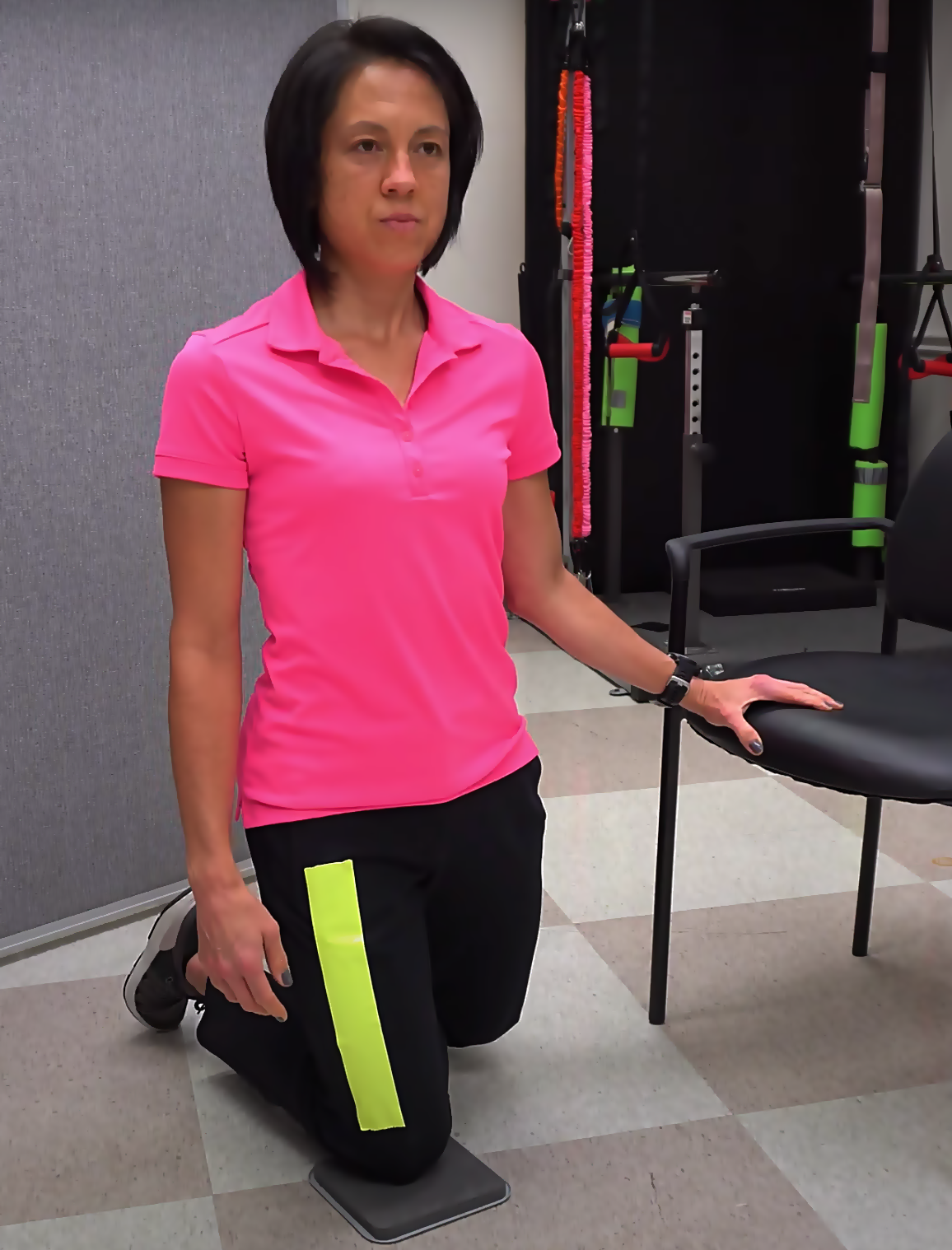
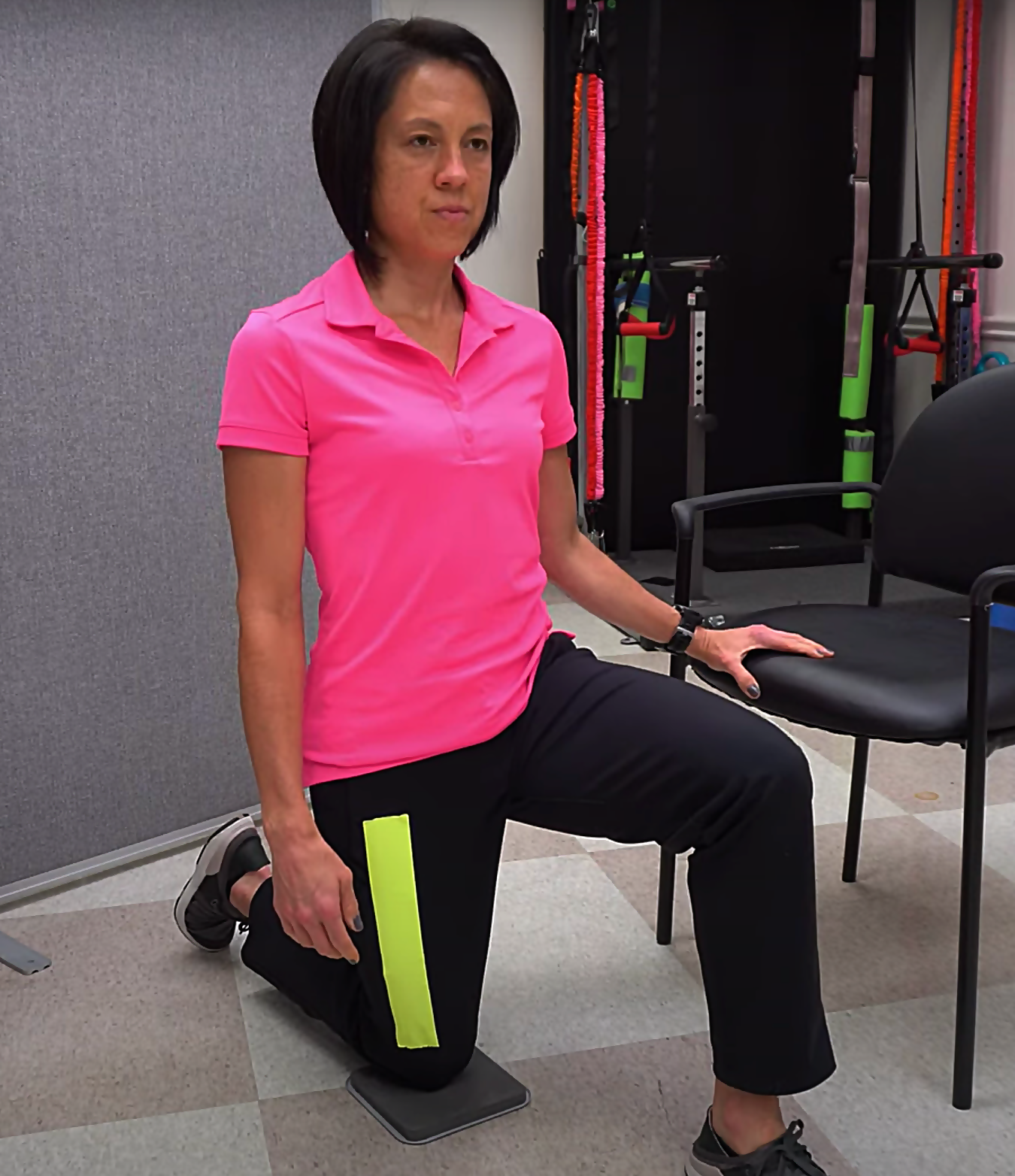
3. Kneeling with Karate Chop
Once you are able to maintain this half kneeling position without holding on, you can try this diagonal movement with the arms. This movement will help to start to disassociate the upper body and the lower body (allow upper body and lower body to move independent of each other). This is an important component of being able to walk with a natural trunk rotation.
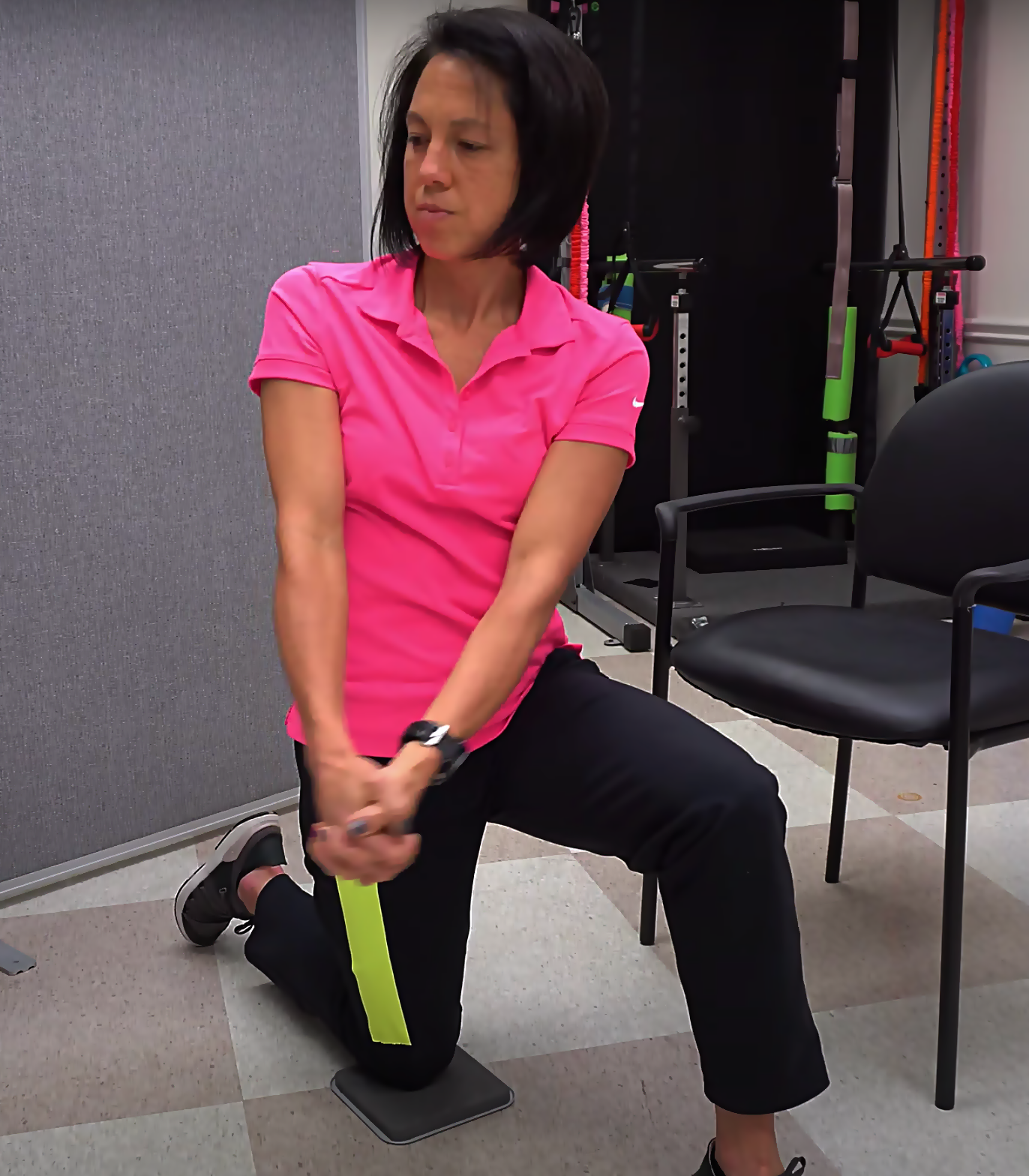
4. Standing Balance with Medicine Ball (rolling forward and backward)
Rolling a medicine ball forward and backward adds an additional challenge and will really require much more control in the involved leg compared to a simple toe tap. Hold on for safety.
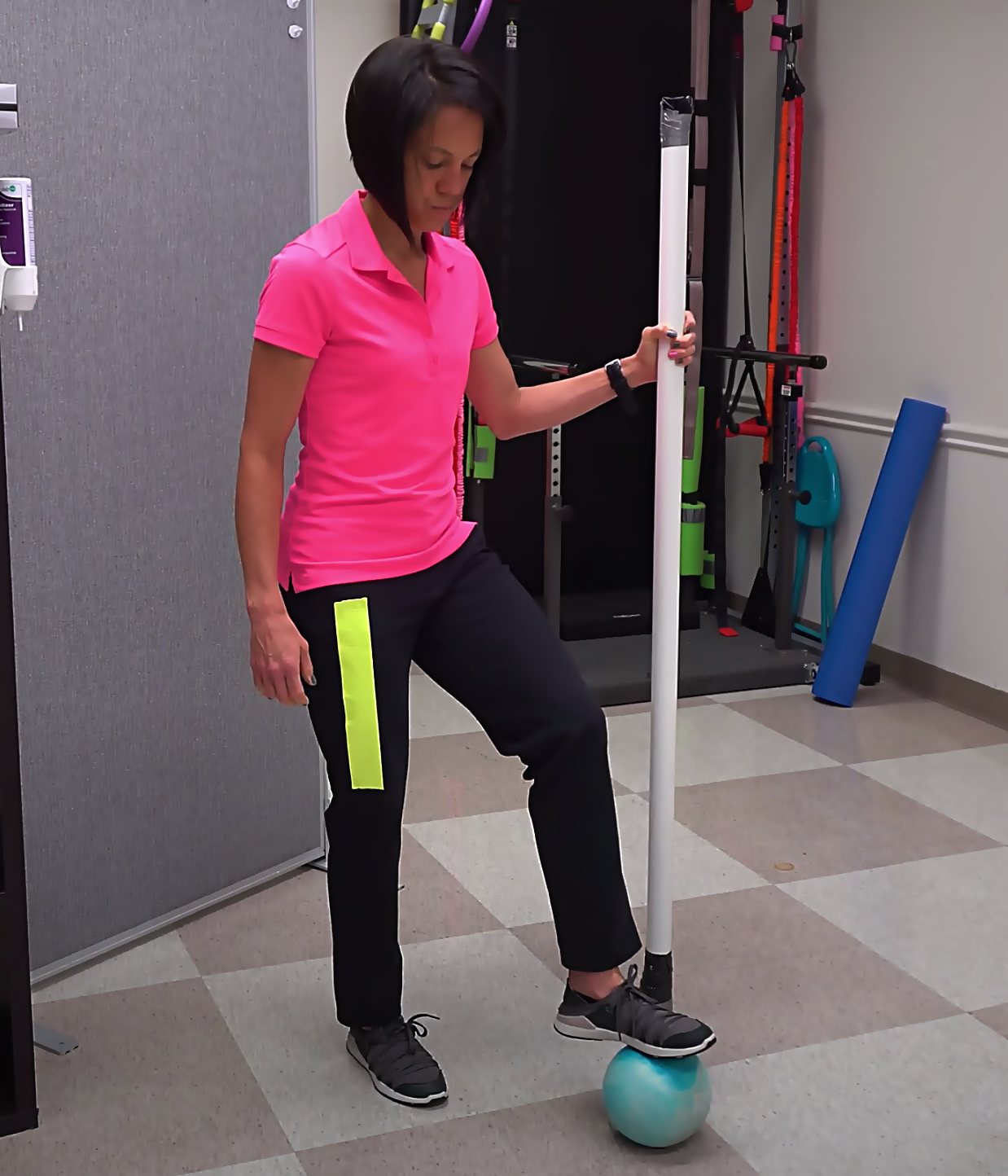
Once you are able to roll the ball forward and backward, you can add a half moon pattern. This will require you to cross midline. This requires more hip control. Crossing midline is also a skill that is sometimes difficult after a stroke or a brain injury. Therefore, it is good to incorporate this type of activity as much as possible.
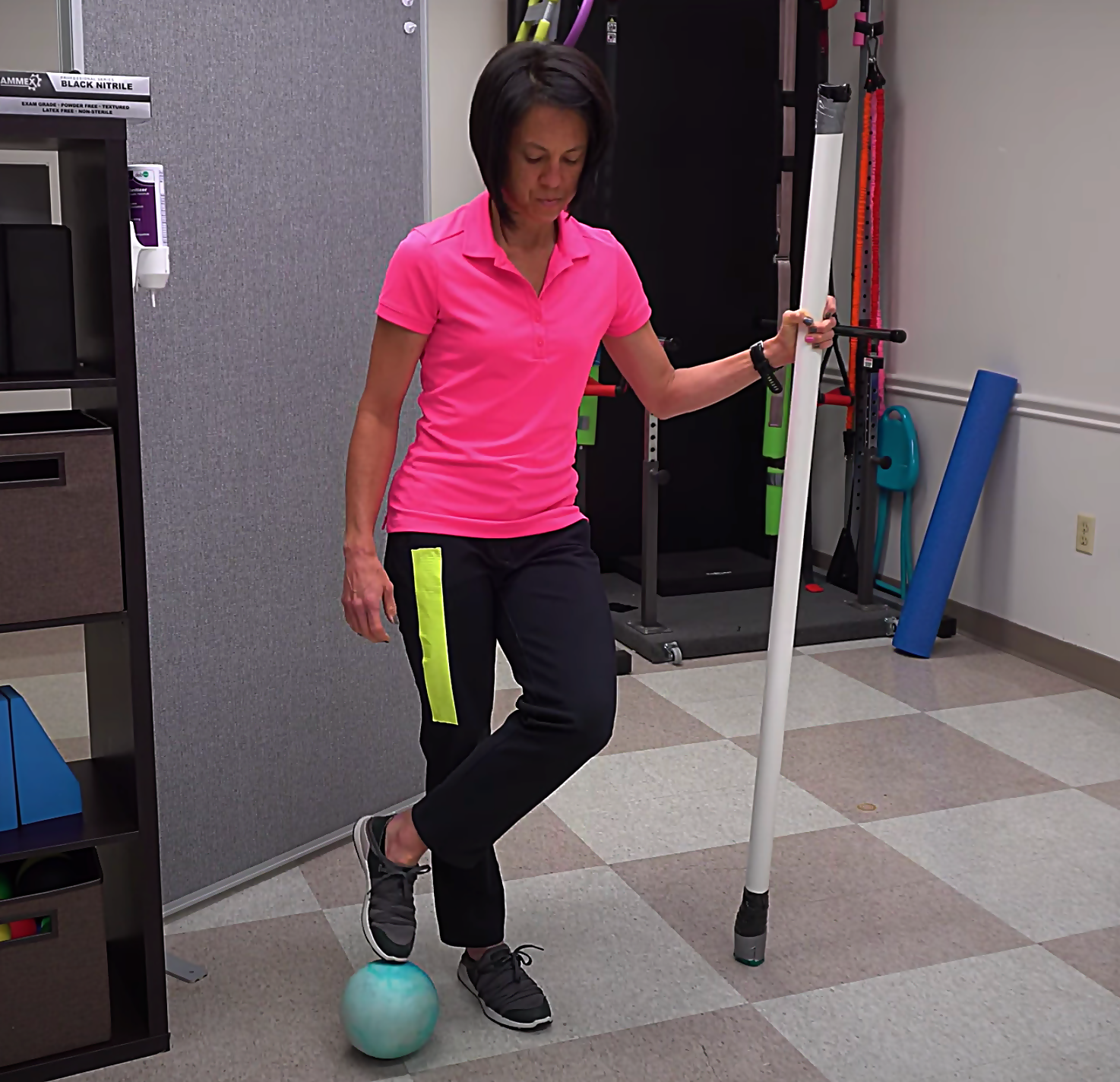
5. Standing Balance with Stacking Cones
Toe taps on these cones will help to work on the accuracy of your foot placement.
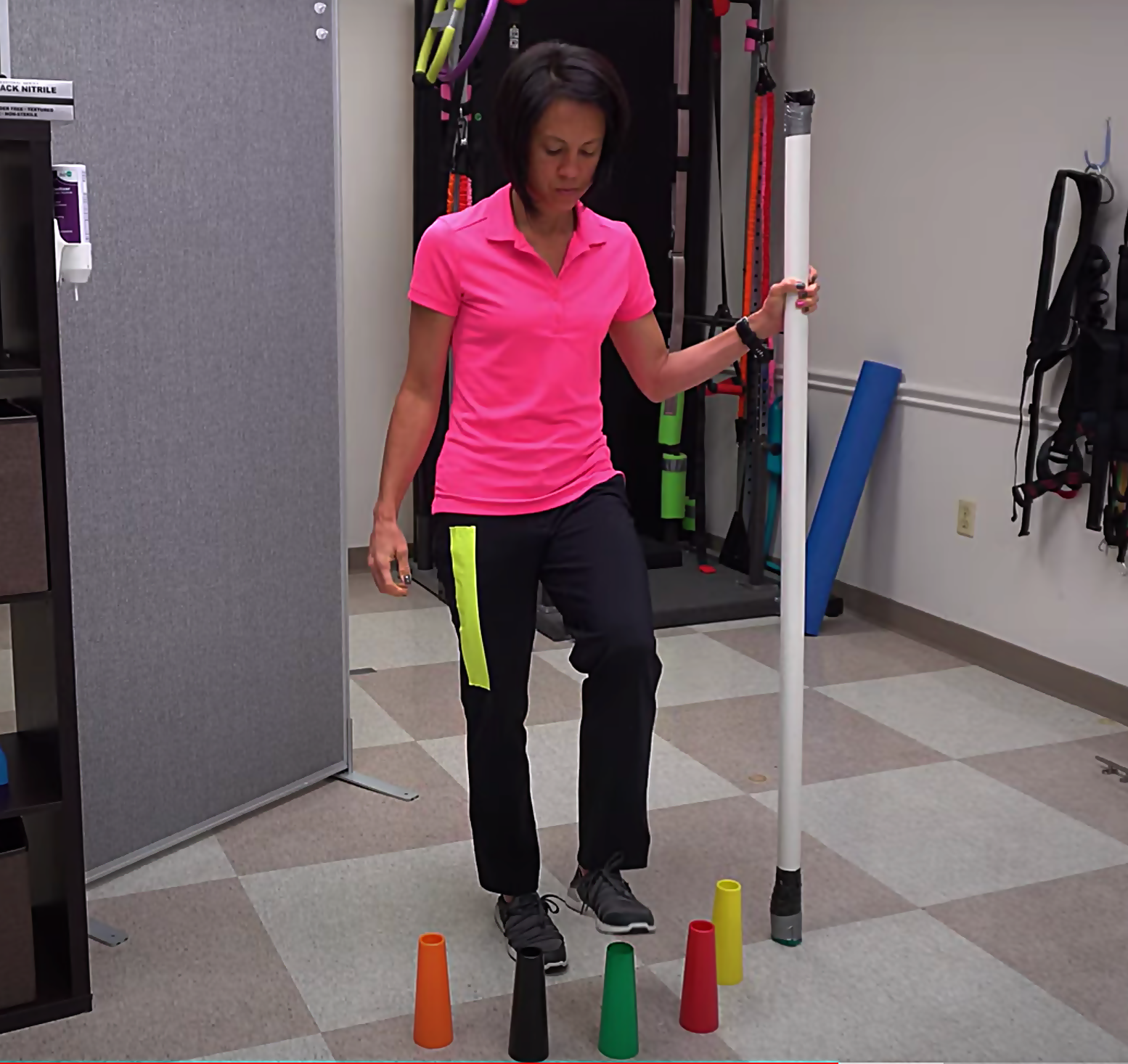
Again, place cones on the outside of the involved leg and work on crossing midline.
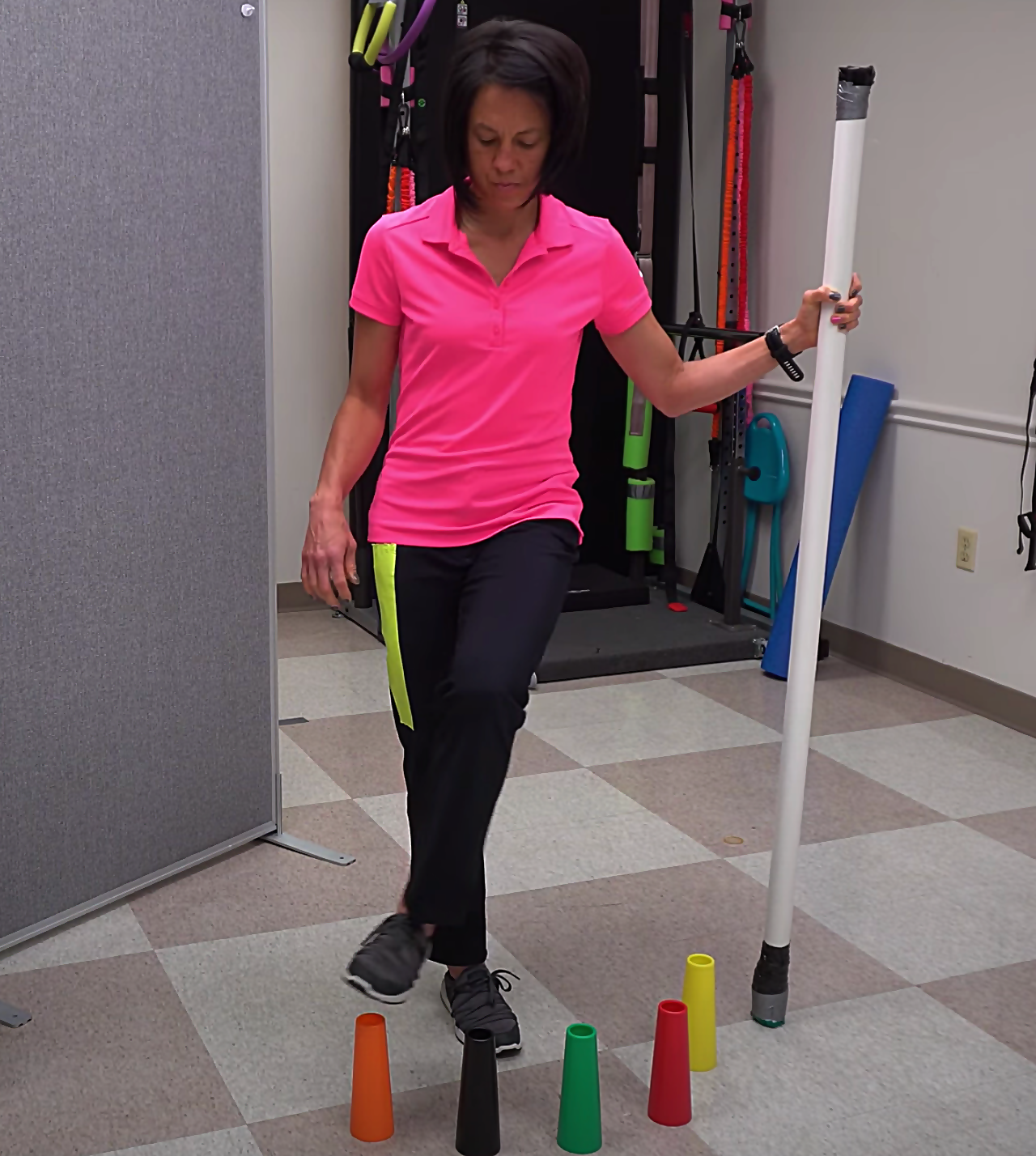
Video with this complete series:
More Articles You Might Be Interested In:
Understanding and Fixing Leg Cramps Post Stroke
Clonus Explained: What It Is, Why It Happens, and What You Can Do About It Stop Letting Leg Cramps Slow Your Recovery https://youtu.be/fGNGXoMSvT4 Can Clonus Affect the Way You Walk? Absolutely—Here’s What You Need to Know Have you ever felt your foot suddenly...
Why Does My Leg Flop Out When I Walk After a Stroke?
Why Does My Leg Flop Out When I Walk After a Stroke? You know the feeling.You’re walking. Or trying to walk. And then your leg just… flops out to the side.You try to correct it, but it keeps happening.Frustrating, right? Let’s break this down.You’re not alone, and...
How to Fix An Abducted Gait
Reclaim Your Stride: Fixing Abducted Gait After Stroke https://youtu.be/VGvg5qeLmy0 Recovering from a neurological injury can affect your walking pattern, one of which is the "abducted leg walking pattern." In this post, we'll cover what it is, its causes, and how to...
How to Fix a Trendelenburg Gait
Why Your Hip Drops When You Walk : How to Regain Stability https://youtu.be/37akItHE9mcHave you ever noticed that one side of your hip drops lower when you walk? Maybe someone pointed it out, or you feel off-balance or unsteady when taking steps. This could be a sign...
Correct Knee Hyperextension after a Neurologic Injury
Struggling with Knee Hyperextension? Here's How to Fix It! Does your knee snap backward when you walk? Do your steps feel jerky, unsteady, or inefficient? If so, you might be dealing with knee hyperextension, a common issue after a stroke, brain injury, or...
How to Fix a Vaulting Gait
How to Stop Vaulting and Walk More Naturally After a Stroke If you’ve ever noticed yourself pushing up on your stronger leg to swing your weaker leg forward while walking, you may be experiencing vaulting. The good news? Vaulting can be unlearned with the right...
How to Fix Circumduction and Walk Better
Why Your Leg Swings Out: Causes and Exercises to Improve Gait https://youtu.be/mXI9oaJ6uHkCircumduction is a common issue after a stroke, where your leg swings out to the side instead of moving straight forward as you walk. This abnormal gait pattern can be...
Eye Exercises for Stroke Survivors: Regaining Vision and Function
Visual impairment is a very common consequence in stroke survivors—almost 50% of stroke survivors become visually impaired. This is primarily because the brain's visual pathways are blocked or damaged when a person experiences a stroke. As a result, patients often...
Walking Exercises for Stroke Patients
Many people inquire about the "best exercises" for stroke patients to improve walking. I like to use the term "Drills" when referring to "stroke exercises". Why? Because "Drills" are what I think of when I think of repetitive movement. Case and point, drills are...
Balance Training for Ataxia
Balance training is a critical component for anyone with ataxia. This is due to the fact that ataxia negatively impacts the balance system and is one of the leading causes of disability. Ataxia is caused by damage to the cerebellum. The cerebellum plays a MAJOR role...









